Trade names Viread, others Routes ofadministration By mouth (tablets) CAS ID 147127-20-6 Molar mass 519.443 g/mol ChemSpider ID 4587262 | AHFS/Drugs.com Monograph ATC code J05AF07 (WHO) Bioavailability 25% ChEBI ID 63717 | |
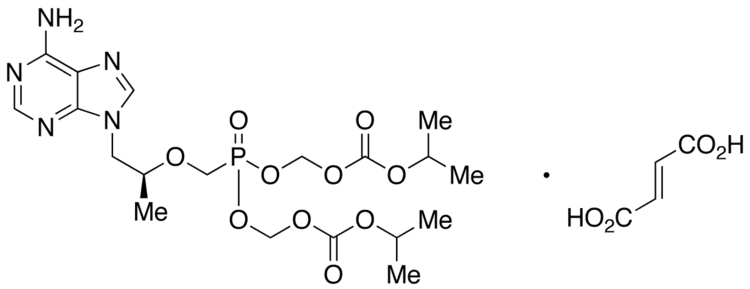 | ||
Pregnancycategory AU: B3US: B (No risk in non-human studies) Legal status AU: S4 (Prescription only)CA: ℞-onlyUK: POM (Prescription only)US: ℞-only | ||
Medical vocabulary what does emtricitabine tenofovir disoproxil fumarate drug combination mean
Tenofovir disoproxil, sold under the trade name Viread among others, is a medication used to treat chronic hepatitis B and to prevent and treat HIV/AIDS. It is generally recommended for use with other antiretrovirals. It may be used for prevention of HIV/AIDS among those at high risk before exposure, and after a needlestick injury or other potential exposure. It is sold both by itself and together as emtricitabine/tenofovir and efavirenz/emtricitabine/tenofovir. It does not cure HIV/AIDS or hepatitis B. It is available as by mouth as a tablet or powder.
Contents
- Medical vocabulary what does emtricitabine tenofovir disoproxil fumarate drug combination mean
- Medical uses
- HIV risk reduction
- Adverse effects
- Interactions
- Mechanism of action
- Pharmacokinetics
- History
- Drug forms
- Chemistry
- Detection in body fluids
- References
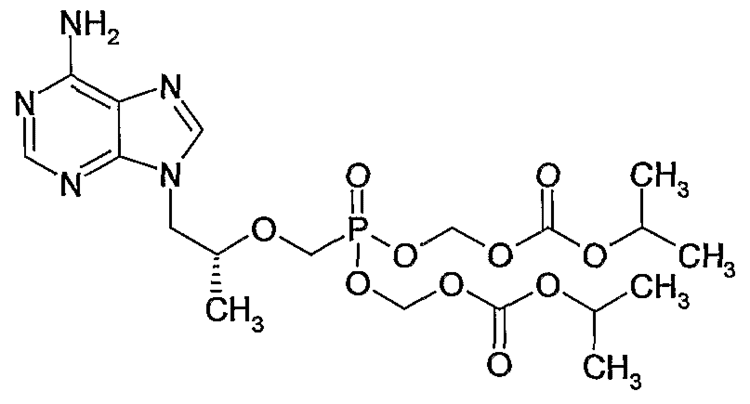
Common side effects include nausea, rash, diarrhea, headache, pain, depression, and weakness. Severe side effects include high blood lactate and an enlarged liver. There are no absolute contraindications. It is often recommended during pregnancy and appears to be safe. It is a nucleotide reverse transcriptase inhibitor and works by decreasing the ability of the viruses to replicate.
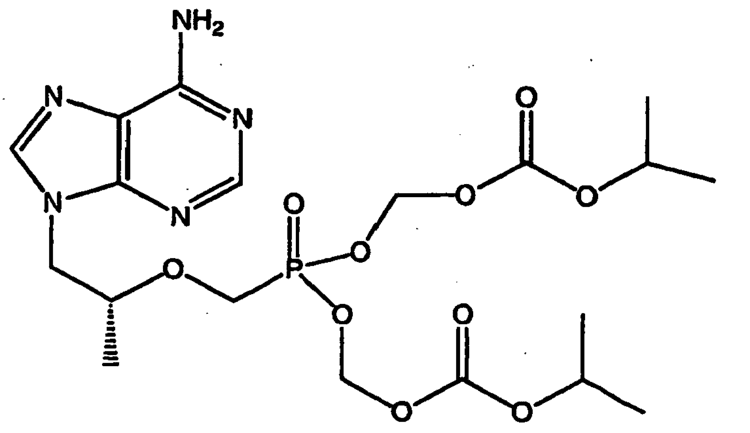
Tenofovir was patented in 1996 and approved for use in the United States in 2001. It is on the World Health Organization's List of Essential Medicines, the most effective and safe medicines needed in a health system. In the United States there are no generic versions available as of 2015. The wholesale cost in the developing world is between 3.30 and 29.13 USD per month. As of 2015 the cost for a typical month of medication in the United States is more than 200 USD.
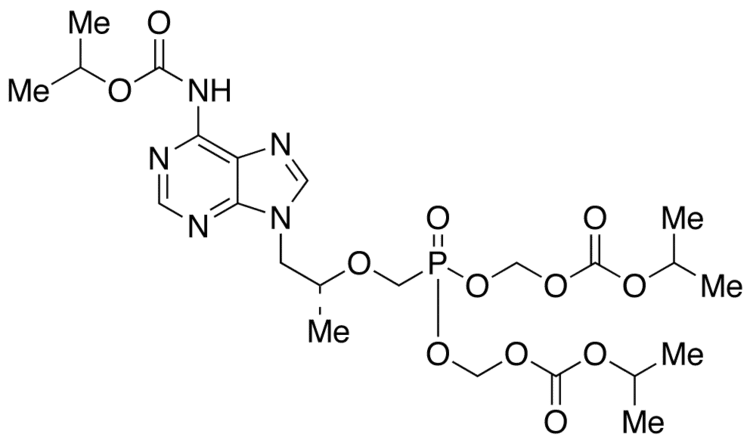
Medical uses

Tenofovir disoproxil is used for HIV-1 infection and chronic hepatitis B treatment. For HIV-1 infection, tenofovir is indicated in combination with other antiretroviral agents for people 2 years of age and older. For chronic hepatitis B patients, tenofovir is indicated for patients 12 years of age and older.
HIV risk reduction

Tenofovir can be used for HIV prevention in people who are at high risk for infection through sexual transmission or injecting drug use. A Cochrane review examined the use of tenofovir for prevention of HIV before exposure and found that both tenofovir alone and the tenofovir/emtricitabine combination decreased the risk of contracting HIV for high risk patients. The U.S. Centers for Disease Control and Prevention (CDC) also conducted a study in partnership with the Thailand Ministry of Public Health to ascertain the effectiveness of providing people who inject drugs illicitly with daily doses of tenofovir as a prevention measure. The results revealed a 48.9% reduced incidence of the virus among the group of subjects who received the drug in comparison to the control group who received a placebo.
Adverse effects
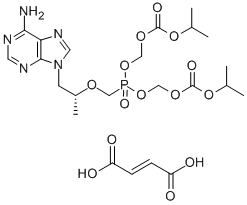
Tenofovir disoproxil is generally well tolerated with low discontinuation rates among the HIV and chronic hepatitis B population. There are no contraindications for use of this drug. The most commonly reported side effects due to use of tenofovir disoproxil were dizziness, nausea, and diarrhea. Other adverse effects include depression, sleep disturbances, headache, itching, rash, and fever. The US box warning cautions potential onset of lactic acidosis or liver damage due to use of tenofovir disoproxil.
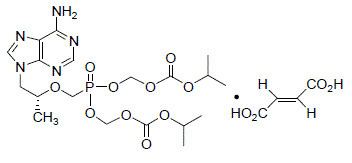
Long term use of tenofovir disoproxil is associated with nephrotoxicity and bone loss. Presentation of nephrotoxicity can appear as Fanconi syndrome, acute kidney injury, or decline of glomerular filtration rate (GFR). Discontinuation of tenofovir disoproxil can potentially lead to reversal of renal impairment. Nephrotoxicity may be due to proximal tubules accumulation of Tenofovir disoproxil leading to elevated serum concentrations.
Interactions
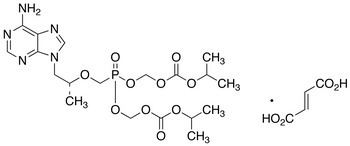
Tenofovir interacts with didanosine and HIV-1 protease inhibitors. Tenofovir increases didanosine concentrations and can result in adverse effects such as pancreatitis and neuropathy. Tenofovir also interacts with HIV-1 protease inhibitors such as atazanavir, by decreasing atazanavir concentrations while increasing tenofovir concentrations. In addition, since tenofovir is excreted by the kidney, medications that impair renal function can also cause problems.
Mechanism of action
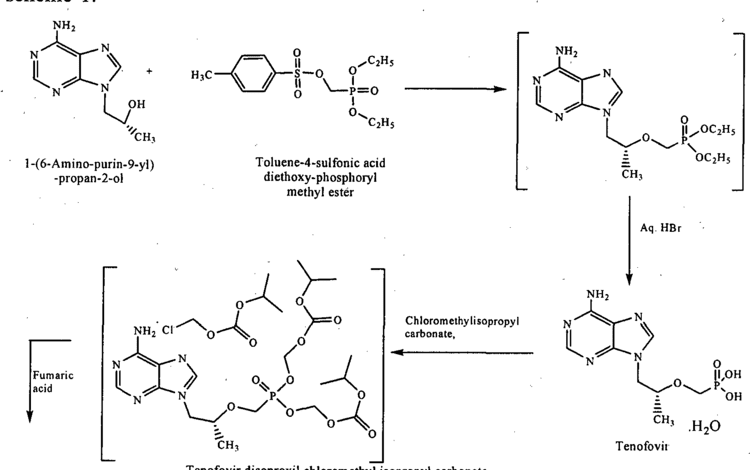
Tenofovir disoproxil is a nucleotide analog reverse-transcriptase inhibitor (NtRTI). It selectively inhibits viral reverse transcriptase, a crucial enzyme in retroviruses such as human immunodeficiency virus (HIV) and hepatitis B virus, while showing limited inhibition of human enzymes, such as DNA polymerases α, β, and mitochondrial DNA polymerase γ. Tenofovir lacks a hydroxyl group on the 3' carbon of its deoxyribose sugar, preventing the formation of the 5′ to 3′ phosphodiester linkage essential for DNA chain elongation. Once incorporated into a growing DNA strand, tenofovir causes premature termination of DNA transcription, preventing viral replication.
Pharmacokinetics

Tenofovir disoproxil is a prodrug that is quickly absorbed from the gut and cleaved to release tenofovir. Inside cells, tenofovir is phosphorylated to tenofovir diphosphate (which is actually a triphosphate, as tenofovir itself already has one phosphate residue), the active compound that inhibits reverse transcriptase via chain termination.
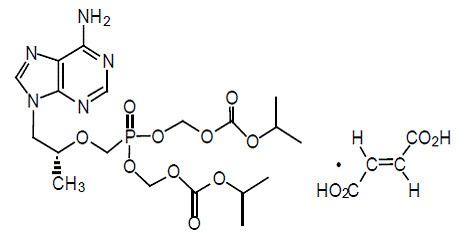
In fasting persons, bioavailability is 25%, and highest blood plasma concentrations are reached after one hour. When taken with fatty food, highest plasma concentrations are reached after two hours, and the area under the curve is increased by 40%. It has no significant interactions with cytochrome P450 enzymes.
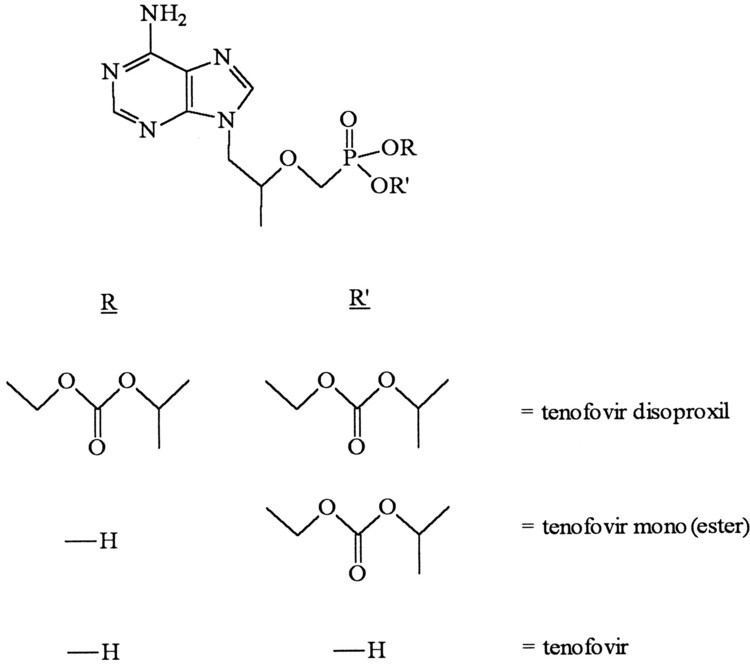
Tenofovir is mainly excreted via the kidneys, both by glomerular filtration and by tubular secretion using the transport proteins OAT1, OAT3 and ABCC4.
History
Tenofovir was initially synthesized by Antonín Holý at the Institute of Organic Chemistry and Biochemistry of the Academy of Sciences of the Czech Republic in Prague. The patent filed by Holý in 1984 makes no mention of the potential use of the compound for the treatment of HIV infection, which had only been discovered one year earlier.
In 1985, De Clercq and Holý described the activity of PMPA against HIV in cell culture. Shortly thereafter, a collaboration with the biotechnology company Gilead Sciences led to the investigation of PMPA's potential as a treatment for HIV infected patients. In 1997 researchers from Gilead and the University of California, San Francisco demonstrated that tenofovir exhibits anti-HIV effects in humans when dosed by subcutaneous injection.
The initial form of tenofovir used in these studies had limited potential for widespread use because it was not absorbed when administered orally. A medicinal chemistry team at Gilead developed a modified version of tenofovir, tenofovir disoproxil. This version of tenofovir is often referred to simply as "tenofovir". In this version of the drug, the two negative charges of the tenofovir phosphonic acid group are masked, thus enhancing oral absorption.
Tenofovir disoproxil was approved by the U.S. FDA on October 26, 2001, for the treatment of HIV, and on August 11, 2008, for the treatment of chronic hepatitis B.
Drug forms
Tenofovir disoproxil is available by mouth and is sold under the brand name Viread among others. Tenofovir disoproxil is a pro-drug form of tenofovir disphophate. It is marketed by Gilead Sciences (as the fumarate, abbreviated TDF).
Tenofovir disoproxil is available in many fixed-dose combinations with other anti-viral drugs. Well known combinations include Atripla (tenofovir disoproxil/emtricitabine/efavirenz), Complera (tenofovir disoproxil/emtricitabine/rilpivirine), Stribild (tenofovir disoproxil, emtricitabine/elviegravir/cobicistat), and Truvada (tenofovir disoproxil/emtricitabine).
Gilead has created a second pro-drug form of the active drug tenofovir diphosphate called Tenofovir Alafenamide. Tenofovir Alafenamide differs from tenofovir disoproxil due to its activation in the lymphoid cells. This allows the active metabolites to accumulate in the lymphoid cells leading to lower systemic exposure and its potential toxicities.
Chemistry
Tenofovir has a melting point of 279 °C (534 °F). Tenofovir disoproxil fumarate is a white to off-white crystalline powder that is soluble in methanol, slightly soluble in water (13.4 mg/ml), and very slightly soluble in dichloromethane.
Detection in body fluids
Tenofovir may be measured in plasma by liquid chromatography. Such testing is useful for monitoring therapy and to prevent drug accumulation and toxicity in people with kidney or liver problems.
